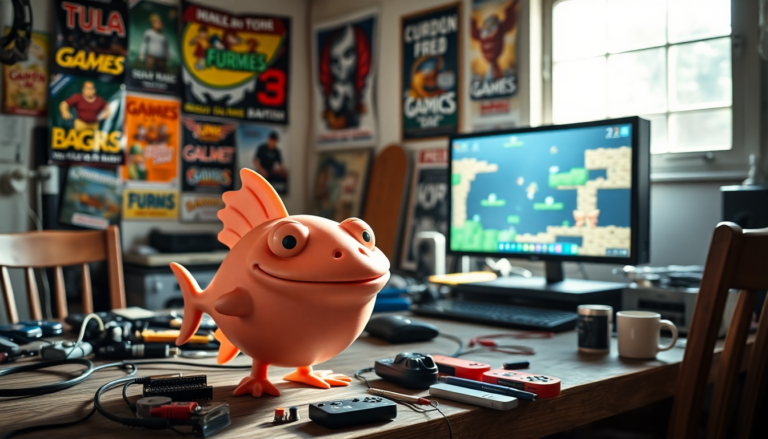Argomenti trattati
Isn’t it fascinating how a simple joke can turn into something much more meaningful? Take the Dopefish, for example—a character that sprang from the imaginative minds at id Software and morphed into a legendary Easter egg in the gaming world. Its journey represents a significant shift in video game development, evolving from casual garage projects into a structured and commercialized industry.
From Garage Projects to Iconic Characters
Back in the early days of gaming, creating a video game often started in a garage, fueled by a group of friends eager to experiment and have fun. Fast forward to today, and independent teams have more chances than ever to bring their ideas to life, but the industry has also become increasingly commercialized. The focus now leans heavily on marketing and bureaucracy, making game development a serious business. Yet, let’s not forget the artistic spirit of game creation, where imagination and a sprinkle of humor still play vital roles.
One of the trailblazers in this humorous approach was Tom Hall, a pivotal figure in establishing id Software alongside John Romero and John Carmack. While working on Commander Keen in Goodbye, Galaxy in 1991, Hall birthed several characters, but one, in particular, swam to the forefront: the Dopefish. This goofy green fish, dubbed the second dumbest creature in the universe, is known for its vacant expression and its simple routine of swimming around and munching on anything that crosses its path. Little did anyone know, this quirky character would soon evolve into a beloved icon of gaming culture.
After his time at id Software, Hall joined Apogee Software, later known as 3D Realms, where he continued to leave his mark on the gaming scene. It was here that the Dopefish made an unexpected cameo in Wacky Wheels. By pressing a particular button, players could summon the Dopefish, marking its debut beyond Commander Keen. This Easter egg quickly captured the hearts of players, paving the way for more appearances in other titles.
The Dopefish’s fame skyrocketed as developers from various studios began to weave the character into their games. For example, fans of Duke Nukem 3D were treated to a hidden message proclaiming “DOPEFISH LIVES,” a delightful nod to the beloved character. Not to be outdone, id Software reintroduced the Dopefish in their flagship title, Quake, where players could stumble upon it in a secret area, igniting a playful rivalry among developers eager to include Easter eggs featuring this silly fish.
A Lasting Legacy Beyond Gaming
The Dopefish’s influence has reached far beyond video games. It has made appearances in animated series like South Park and Tiny Toon Adventures, transforming into a cultural symbol that embodies the whimsical side of gaming. Merchandise featuring the Dopefish—like mugs and t-shirts—emerged, cementing its status as an icon in pop culture.
Even though the Dopefish may have faded from the mainstream spotlight, its legacy remains vibrant. A devoted fan base has created games centered around this quirky character, such as Dopefish Forever!. This lovable fish continues to remind gamers of a time when creativity and humor took center stage in game design. As the gaming landscape evolves, the story of the Dopefish stands as a testament to the importance of imagination and the joy of unexpected surprises in our gaming adventures.

